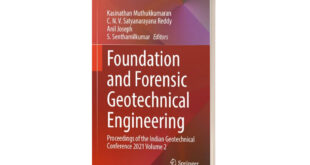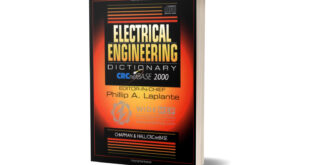Basic Transforms for Electrical Engineering
The textbook covers the most popular transforms used in electrical engineering along with the mathematical foundations of the transforms, uniquely bringing together the two in a single text. Geared towards an upper-undergraduate or graduate-level class, the book covers the most-used transforms including Fourier, Laplace, Discrete Fourier, z-, short-time Fourier, and discrete cosine transforms. The book includes the complex numbers, complex functions, and complex integration that are fundamental to understand the transforms. The author strives to make the study of the subject approachable by appealing to the use of popular software like LabVIEW virtual instruments, Matlab m-files, and C programming resources. Computer projects at the end of chapters further enhance the learning process. The book is based on the author’s years of teaching Engineering Mathematics and Signal courses and can be used in both electrical engineering and mathematics curriculum. Presents both electrical engineering transforms and their mathematical foundations in an understandable, pedagogical, and applicable approach; Covers the most common transforms for electronics and communications engineers including Laplace transform, the Fourier transform, STFT, the z-transform; Features LabVIEW virtual instrument (vi) files, LTSpice simulation files, MATLAB m files, and computer projects in the chapter problems.

Table of contents:
Foreword
Contents
List of Symbols and Abbreviations
Part I Background
1 Complex Numbers
1.1 Representation of Complex Numbers
1.2 Euler’s Identity
1.2.1 Complex Exponential
1.2.2 Conjugate of a Complex Number
1.3 Mathematical Operations
1.3.1 Identity
1.3.2 Addition and Subtraction
1.3.3 Multiplication and Division
1.3.4 Rotating a Number in Complex Plane
1.4 Roots of a Complex Number
1.5 Applications of Complex Numbers
1.5.1 Complex Numbers Versus Trigonometry
1.5.2 Integration
1.5.3 Phasors
1.5.4 3-Phase Electric Circuits
1.5.5 Negative Frequency
1.5.6 Complex Numbers in Mathematics Software
1.5.7 Roots of a Polynomial
Further Reading
Problems
2 Functions of a Complex Variable
2.1 Limit of a Complex Function
2.2 Derivative of Complex Functions and Analyticity
2.3 Cauchy–Riemann Conditions
2.4 Rules of Differentiation
2.5 Harmonic Functions
2.6 Applications of Complex Functions and Analyticity
2.6.1 Elementary Functions
Polynomial and Rational Functions
Exponential Function of a Complex Variable
Logarithm of a Complex Number
Trigonometric Functions of a Complex Variable
Hyperbolic Functions of a Complex Variable
A Worked-Out Example: The Inverse Cosine Function
2.6.2 Conformal Mapping
2.6.3 Fractals
Further Reading
Problems
3 Complex Integration
3.1 Integrating Complex Functions of a Real Variable
3.2 Contours
3.3 Integrating Functions of a Complex Variable
3.4 Numerical Computation of the Complex Integral
3.5 Properties of the Complex Integral
3.6 The Cauchy–Goursat Theorem
3.6.1 Integrating Differentiable Functions
3.6.2 The Principle of Contour Deformation
3.6.3 Cauchy’s Integral for Multiply Connected Domains
3.7 Cauchy’s Integral Formula
3.8 Higher-Order Derivatives of Analytic Functions
3.9 Complex Sequences and Series
3.10 Power Series Expansions of Functions
3.10.1 Taylor and Maclaurin Series
3.10.2 Differentiation and Integration of Power Series
3.11 Laurent Series
3.12 Residues
3.12.1 Residue Theorem
3.12.2 Residue at Infinity
3.12.3 Finding Residues
3.13 Residue Integration of Real Integrals
3.14 Fourier Integrals
Further Reading
Problems
Part II Transforms
4 The Laplace Transform
4.1 Motivation to Use Laplace Transform
4.2 Definition of the Laplace Transform
4.3 Properties of the Laplace Transform
4.3.1 Linearity
4.3.2 Real Differentiation
4.3.3 Real Integration
4.3.4 Differentiation by s
4.3.5 Real Translation
4.3.6 Complex Translation
4.3.7 Periodic Functions
4.3.8 Laplace Transform of Convolution
4.3.9 Initial Value Theorem
4.3.10 Final Value Theorem
4.4 The Inverse Laplace Transform
4.4.1 Real Poles
4.4.2 Complex Poles
4.4.3 Multiple Poles
4.5 More on Poles and Zeros
4.5.1 Factoring Polynomials
4.5.2 Poles and Time Response
4.5.3 An Alternative Way to Solve Differential Equations
4.6 Inverse Laplace Transform by Contour Integration
4.7 Applications of Laplace Transform
4.7.1 Electrical Systems
4.7.2 Inverse LTI Systems
4.7.3 Evaluation of Definite Integrals
Problems
5 The Fourier Series
5.1 Vectors and Signals
5.2 The Fourier Series
5.3 Calculating Fourier Series Coefficients
5.4 Properties of the Fourier Series
5.4.1 Linearity
5.4.2 Symmetry Properties
Even Symmetry
Odd Symmetry
Half-Period Symmetry
5.4.3 Shifting in Time
5.4.4 Time Reversal
5.4.5 Differentiation
5.4.6 Integration
5.5 Parseval’s Relation
5.6 Convergence of Fourier Series
5.7 Gibbs Phenomenon
5.8 Discrete-Time Fourier Series
5.8.1 Periodic Convolution
5.8.2 Parseval’s Relation for Discrete-Time Signals
5.9 Applications of Fourier Series
Problems
6 The Fourier Transform
6.1 Introduction
6.2 Definition of the Fourier Transform
6.3 Fourier Transform Versus Fourier Series
6.4 Convergence of the Fourier Transform
Dirichlet Conditions
6.5 Properties of the Fourier Transform
6.5.1 Symmetry Issues
6.5.2 Linearity
6.5.3 Time Scaling
6.5.4 Time Reversal
6.5.5 Time Shift
6.5.6 Frequency Shift (Amplitude Modulation)
6.5.7 Differentiation with Respect to Time
6.5.8 Integration with Respect to Time
6.5.9 Duality
6.5.10 Convolution
6.5.11 Multiplication in Time Domain
6.5.12 Parseval’s Relation
6.5.13 Two-way Transform: Fourier Integral Theorem
6.5.14 Fourier Transform of a Periodic Time Function
6.6 Sampling
6.6.1 Impulse-Sampling and Aliasing
6.6.2 Natural Sampling: The Zero-Order Hold
6.6.3 Undersampling
6.7 Fourier Transform Versus Laplace Transform
6.8 Discrete-Time Signals
6.9 Fourier Transform of Discrete Signals
6.9.1 The Discrete Fourier Transform
6.10 Two-Dimensional Fourier Transform
6.11 Applications
6.11.1 Signal Processing
Spectrogram
Cepstrum Analysis
Correlation and Energy Spectrum
Filtering
6.11.2 Circuit Applications
6.11.3 Communication
Propagation
Time-Division Multiplexing (TDM)
Frequency-Division Multiplexing (FDM)
Amplitude Modulation and Demodulation
FM Slope Detectors
6.11.4 Instrumentation
Further Reading
Problems
7 Short-Time-Fourier Transform
7.1 Short-Time Fourier Transform
7.1.1 Frequency Resolution
7.1.2 Inverse Short-Time Fourier Transform
7.1.3 Discrete-Time STFT
Windowing
7.2 Gabor Transform
7.3 STFT in LabVIEW
Problems
8 Fast Fourier Transform
8.1 Radix-2 FFT Algorithms
8.1.1 Decimation in Time
8.1.2 Decimation in Frequency
8.2 Computer Implementation
8.2.1 LabVIEW Implementation
8.2.2 Implementing FFT in C
Further Reading
Assignments
9 z-Transform
9.1 Definition of the z-Transform
9.2 Region of Convergence for the z-Transform
9.3 z-Transform Properties
9.3.1 Linearity
9.3.2 Time Shifting
9.3.3 Multiplication by an Exponential Sequence
9.3.4 Multiplication by n
9.3.5 Division by n
9.3.6 Conjugate of a Complex Sequence
9.3.7 Convolution of Sequences
9.3.8 Time Reversal
9.3.9 Initial Value Theorem
9.4 The Inverse z-Transform
9.4.1 Inversion by Partial Fraction Expansion
Complex Roots
Multiple Roots
9.4.2 Inverse z-Transform Using Contour Integration
9.5 Complex Convolution Theorem
9.6 Parseval Theorem
9.7 One-Sided z-Transform
9.8 Difference Equations
9.9 Conversions Between Laplace Transform and z–Transform
9.10 Fourier Transform of Discrete-Time Signals
9.11 Applications of the z-Transform
9.11.1 Digital Oscillator
A 3-Tap FIR Filter
Derivative in Discrete-Time
Fibonacci Sequence in Closed Form
9.12 Discrete Signal Processing vs Digital Technologies: A Historical Retrospect
Further Reading
Problems
10 Discrete Cosine Transform
10.1 From DFT to DCT
10.1.1 One-Dimensional Signal
10.1.2 Two-Dimensional Signal
10.2 DCT Implementation
10.3 DCT Applications
Further Reading
Problems
References
Index
 widemep.com
widemep.com



Hey there, I appreciate you posting great content covering that topic with full attention to details and providing updated data.
You’ve written terrific content on this topic, which goes to show how knowledgably you are on this subject.